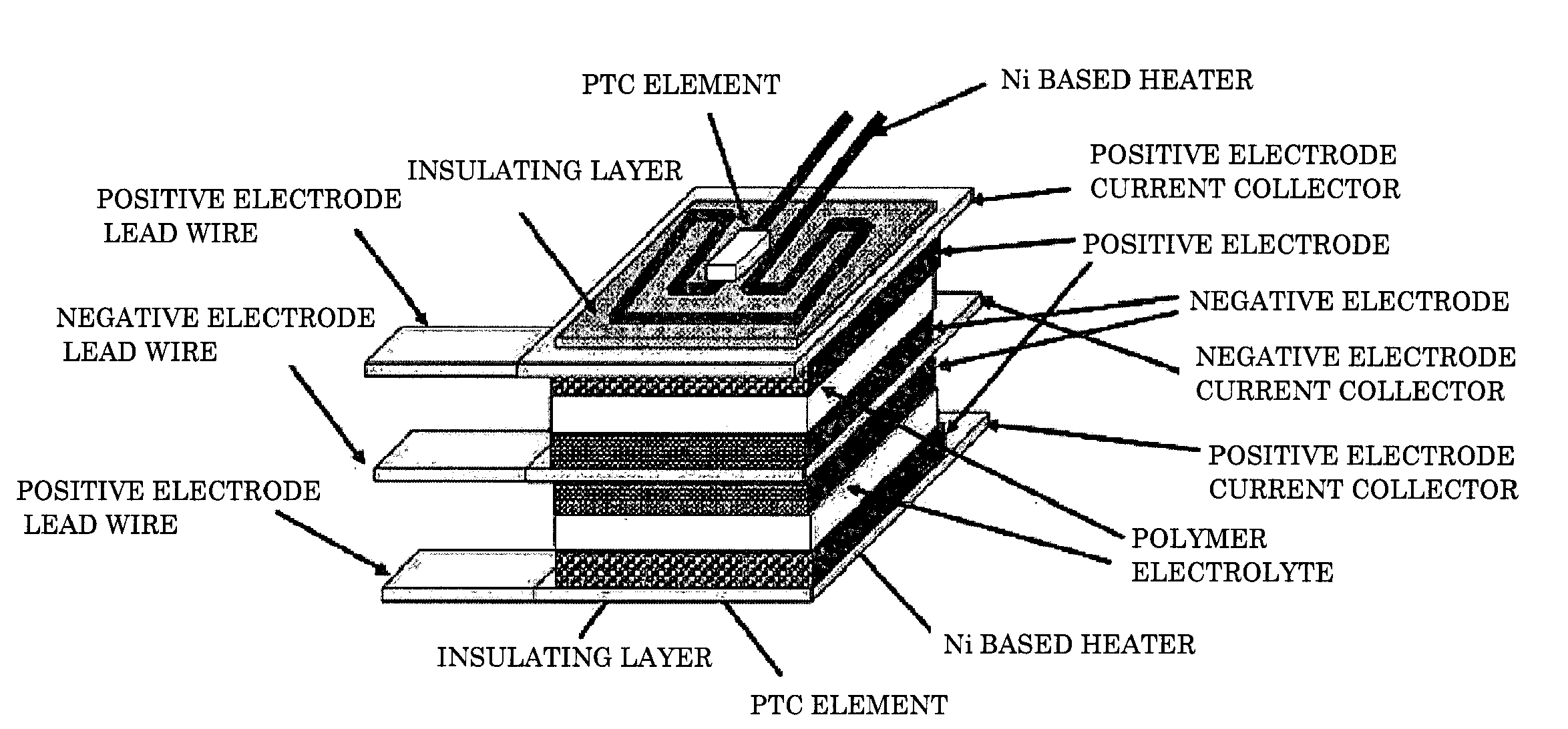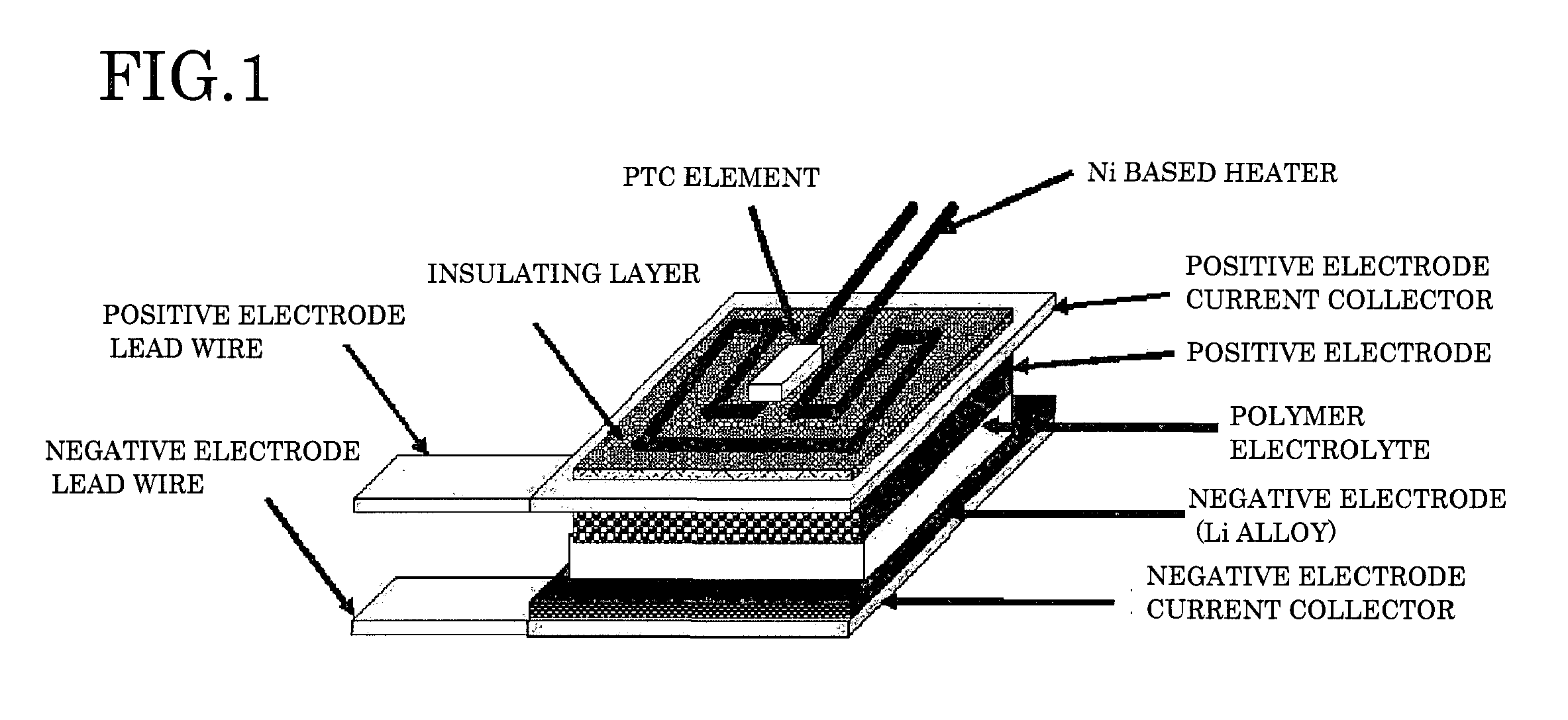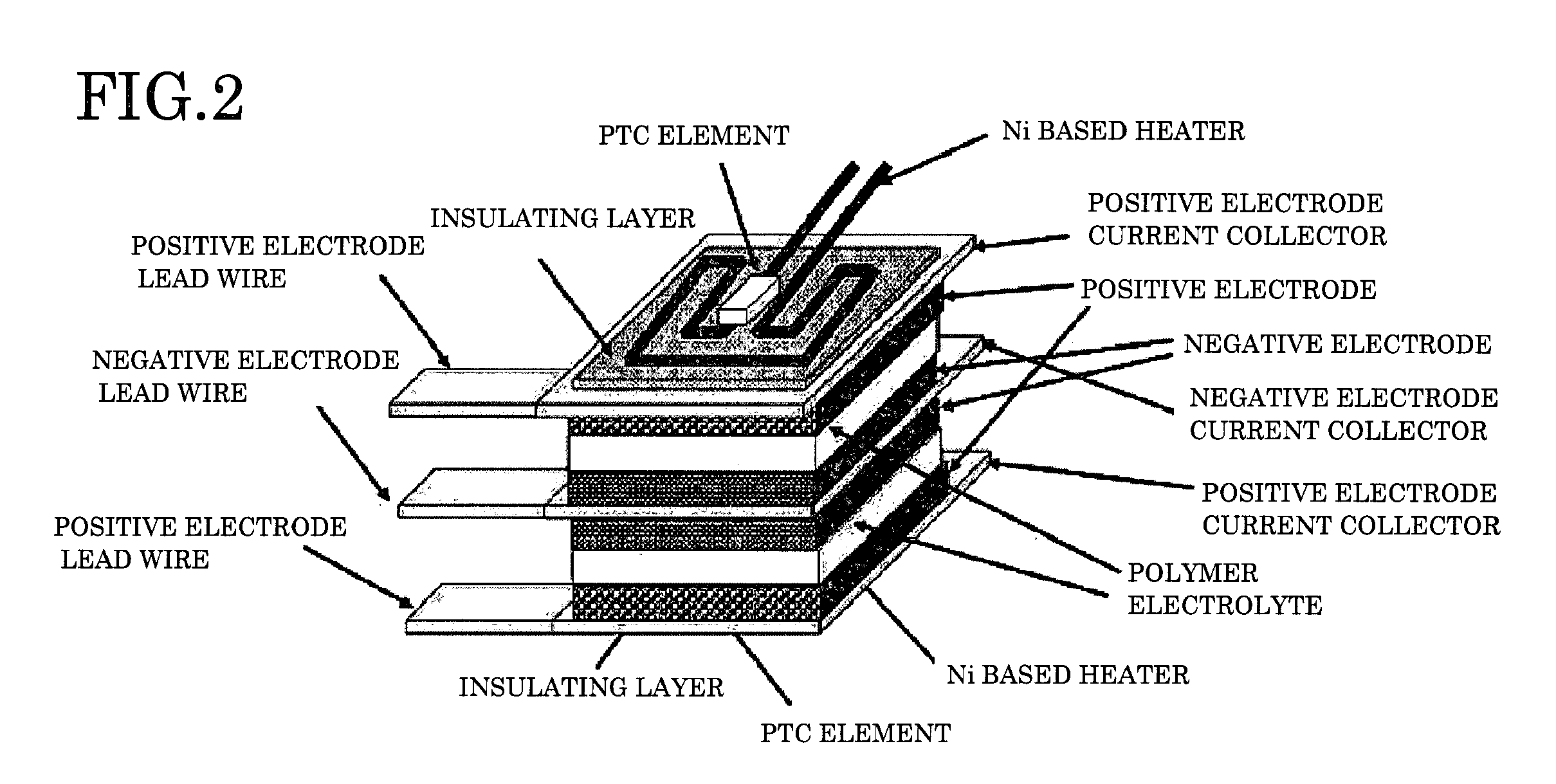Heat generation mechanism-provided secondary battery
a secondary battery and heat generation mechanism technology, applied in secondary cell servicing/maintenance, cell components, electrochemical generators, etc., can solve the problems of high temperature ignition risk, complex devices, high battery properties, etc., and achieve good safety, good discharge capacity, and poor battery properties
- Summary
- Abstract
- Description
- Claims
- Application Information
AI Technical Summary
Benefits of technology
Problems solved by technology
Method used
Image
Examples
example 1
[0048]An organic electrolyte liquid-free polymer lithium ion secondary battery having an Ni alloy-made heater provided on a current collector was prepared (this polymer lithium ion secondary battery will be hereinafter referred to as “invention battery 1”). Commercially available LiCoO2 was used as a positive electrode material; an Li metal alloy foil was used as a negative electrode; and a polymer electrolyte prepared by adding, as an Li supporting salt, LiTFSI (lithium trifluoromethanesulfonylimide) to a copolymer of polyethylene and polypropylene was used as an electrolyte.
[0049]On an Al foil as a positive electrode current collector, a slurry of a positive electrode material prepared using a solvent was coated and dried to form a positive electrode layer. On the positive electrode layer, a slurry prepared by adding LiTFSI (lithium trifluoromethanesulfonylimide) to a copolymer of polyethylene and polypropylene by using a solvent was coated and dried to form an electrolyte layer. ...
example 2
[0053]An organic electrolyte liquid-free lithium ion secondary battery having a ceramic heater provided on a current collector was prepared (this lithium ion secondary battery will be hereinafter referred to as “invention battery 2”). Commercially available LiCoO2 as an active material was used as a positive electrode material; Li4Ti5O12 as an active material was used as a negative electrode material; and an organic-inorganic composite electrolyte prepared by mixing a polymer electrolyte prepared by adding, as an Li supporting salt, LiTFSI (lithium trifluoromethanesulfonylimide) to a copolymer of polyethylene and polypropylene with an inorganic solid electrolyte powder was used as an electrolyte. A glass ceramic powder in which an LiTi2(PO4)3 solid solution having a crystal structure of an NASICON type was deposited in a main crystal phase was used as the inorganic solid electrolyte.
[0054]On an Al foil as a positive electrode current collector, a slurry of a positive electrode mater...
example 3
[0058]A solid electrolyte type lithium ion secondary battery having a PTC thermistor provided on a current collector was prepared (this lithium ion secondary battery will be hereinafter referred to as “invention battery 3”). A glass ceramic containing Li1+x+y(Al, Ga)x(Ti, Ge)2−xSiyP3−yO12 in a main crystal phase was used as an electrolyte. The glass ceramic was prepared by dissolving oxide raw materials in a Pt pot, casting the thus dissolved molten glass into a stainless steel-made mold and quenching it to obtain glass, followed by again heating the glass for crystallization. The glass ceramic had a size of 50 mm in square, and the both surfaces thereof were ground and polished to process into a disc, thereby forming a solid electrolyte. Commercially available LiCoO2 as an active material was used as a positive electrode material; Li4Ti5O12 as an active material was used as a negative electrode material; a PVdF resin was used as a binder; a glass ceramic powder in which an LiTi2(PO...
PUM
 Login to View More
Login to View More Abstract
Description
Claims
Application Information
 Login to View More
Login to View More - R&D
- Intellectual Property
- Life Sciences
- Materials
- Tech Scout
- Unparalleled Data Quality
- Higher Quality Content
- 60% Fewer Hallucinations
Browse by: Latest US Patents, China's latest patents, Technical Efficacy Thesaurus, Application Domain, Technology Topic, Popular Technical Reports.
© 2025 PatSnap. All rights reserved.Legal|Privacy policy|Modern Slavery Act Transparency Statement|Sitemap|About US| Contact US: help@patsnap.com



